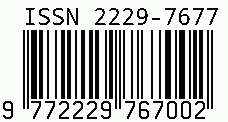
International Journal on Science and Technology
E-ISSN: 2229-7677
•
Impact Factor: 9.88
A Widely Indexed Open Access Peer Reviewed Multidisciplinary Bi-monthly Scholarly International Journal
Plagiarism is checked by the leading plagiarism checker
Call for Paper
Volume 16 Issue 3
July-September 2025
Indexing Partners



















Overview and Trends in Pradhan Mantri Mudra Yojna
| Author(s) | Sudhir, Satyajit Mallick, Eeshika Dagar |
|---|---|
| Country | India |
| Abstract | This research analyses the implementation trends of the Pradhan Mantri Mudra Yojana (PMMY) from 2016 to 2023, a scheme launched to provide collateral-free credit up to ₹10 lakh (later ₹20 lakh) to non-corporate, non-farm micro-units in India. The PMMY, which aims to promote financial inclusion and self-employment, operates through the Micro Units Development and Refinance Agency (MUDRA) and a network of lending institutions. The study utilizes percentage analysis to evaluate changes in disbursement patterns across Shishu (loans ≤ ₹50,000), Kishore (₹50,001-₹5 lakh), and Tarun (₹5-₹10 lakh) categories. Findings indicate a dramatic growth in overall loan disbursements, formalizing and funding previously underserved sectors, with a total of 28.89 crore loans disbursed. The scheme has shown remarkable progress in outreach, particularly among women entrepreneurs (68% of accounts) and disadvantaged groups (51% to SC/ST/OBC borrowers). While the "Shishu" category initially dominated, there's a growing share of Kishore and Tarun loans over time, reflecting increasing credit needs. The study also notes a decline in loan disbursements during the COVID-19 pandemic, followed by a strong rebound, demonstrating the scheme's resilience. Despite its success in enhancing formal credit access and fostering business creation, particularly for women, some critiques suggest that PMMY has not dramatically shifted overall credit structures or significantly accelerated growth beyond pre-existing trends. Challenges include persistent issues in borrower awareness and inter-scheme coordination, along with rising Non-Performing Assets (NPAs) in the Shishu segment of public-sector banks. The research concludes that PMMY has significantly widened outreach and promoted inclusive lending, emphasizing the need for continued support for small borrowers, facilitation of loan progression, targeted outreach in underserved areas, and improved monitoring. |
| Keywords | Pradhan Mantri Mudra Yojana (PMMY), Micro and Small Firms (MSEs), Financial Inclusion, Non-Performing Assets (NPAs), Self-employment, Economic activity |
| Field | Sociology > Economics |
| Published In | Volume 16, Issue 2, April-June 2025 |
| Published On | 2025-05-30 |
| DOI | https://doi.org/10.71097/IJSAT.v16.i2.5732 |
| Short DOI | https://doi.org/g9mvt4 |
Share this


CrossRef DOI is assigned to each research paper published in our journal.
IJSAT DOI prefix is
10.71097/IJSAT
Downloads
All research papers published on this website are licensed under Creative Commons Attribution-ShareAlike 4.0 International License, and all rights belong to their respective authors/researchers.

